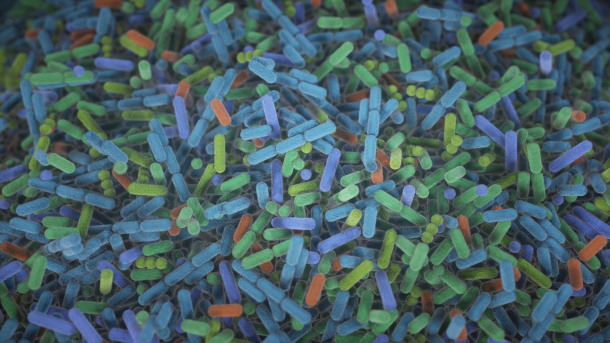Plastic Containers Linked to Heart Failure
Air Date: Week of March 14, 2025

Exposure to hot food placed in disposable plastic takeout containers is associated with an increased risk of congestive heart failure, according to a new study in Ecotoxicology and Environmental Safety. (Photo: Jacoby Clarke, Pexels, Pexels license)
Plastics can contain thousands of chemicals like phthalates and PFAS which are harmful to human and animal health. A new study published in the journal Ecotoxicology and Environmental Safety, found that higher exposure to disposable takeout containers, was linked to a higher risk of congestive heart failure in both humans and animals. Dr. Leonardo Trasande the director of the NYU Center for the Investigation of Environmental Hazards joined host Living on Earth Steve Curwood to review the study.
Transcript
BELTRAN: It’s Living on Earth, I’m Paloma Beltran.
CURWOOD: And I’m Steve Curwood.
It’s the end of a long work day, and, surprise, surprise, you’re starving. All you want to do is curl up with your favorite takeout and binge watch that one addicting TV series. But there may be a cost to eating food served from plastic containers, beyond the hit to your bank account. A study from China, published at the end of 2024 in the journal Ecotoxicology and Environmental Safety, found that higher exposure to plastic takeout containers was linked to a greater risk of congestive heart failure. Dr. Leonardo Trasande is a pediatrician who directs the NYU Center for the Investigation of Environmental Hazards and he’s read this study. Welcome back to Living on Earth, Dr. Trasande!
TRASANDE: It's always great to be here with you, Steve.
CURWOOD: So we've talked to you before about the negative impacts of plastic on our health, but now there's a study in Ecotoxicology and Environmental Safety that shows even more health and safety concerns linked to food takeout containers and plastic exposure. Talk to me about that study, starting with its finding that high frequency exposure to hot food placed in plastics is significantly associated with an increased risk of congestive heart failure.
TRASANDE: So the researchers based in China started with questionnaires that asked all sorts of lovely details about what they ate and how they placed their food before they ate it, and what conditions they used to manage their food. And then they followed the population over time and identified who got sick and from what. And when they looked more carefully, they found that adults with higher consumption of this food that they routinely placed hot in plastic containers was associated with a greater risk of dying from congestive heart failure.

The researchers also found changes to the microbiomes of rats exposed to hot water kept in disposable plastic takeout containers. (Photo: NIH Image Gallery, CC BY 2.0)
CURWOOD: So this link between hot food placed in plastics and congestive heart failure, this is in humans. What about animals?
TRASANDE: So the researchers did something quite impressive that you don't usually see in a single peer reviewed publication. They took what they found in humans and then did an animal experiment to verify what might be going on in the humans because you can't control humans even in a randomized, controlled trial the way you would need to to expose people intentionally to hot food in a plastic container. So what they did is they took plastic containers, they put hot water in them, and then they used animals as the experimental vehicle to test their hypothesis, and what they found here is pretty impressive in that they looked at the microbes in the guts of these animals, and they found really interesting differences that might explain why people might be developing heart disease. Now I want to go back to the hot water part, because there's something really important here in this study, and that is that we typically put food into these packages, and the hot food we often put into these packages is processed food. And so a lot of people, when they see associations in humans of fast food consumption with heart disease, they say, well, it's not really the plastic. It's really the food that they're eating in contact with the plastic. The plastic is, they say, an innocent bystander. Well, putting hot water in a plastic container really goes a long way to excluding that, really focuses on what's going on in the plastics that's changing the animal's body and the animal's microbiome, as we call it. And then they went further, and they looked at the hearts. This is where you can sadly sacrifice the animals to evaluate the tissue more directly and in a controlled fashion. And they found changes in the heart consistent with the congestive heart failure they found in the humans. So what's really compelling here is the read across from humans to animals, and the consistency of the study findings in aggregate.
CURWOOD: So what are the mechanisms behind this phenomenon, this plastic exposure, increasing this risk of congestive heart disease, human or animal? How?
TRASANDE: Well, to begin with, I have to say, I was surprised by what they found was the explanation. We don't usually think of our gut microbes being damaged by plastic, but just like animals and wildlife are damaged by plastic, just like humans are damaged by plastic, our microbes are damaged by plastic. But what really impresses me about this study is they opened up another Pandora's box, and they opened up another potential mechanism by which plastic can harm the heart. Mostly what we thought with plastic and harming the heart is back to those particles that literally irritate the linings of the coronary arteries, and then the chemicals themselves hack our hormones, our natural signaling molecules that underlie basic biological functions like temperature, metabolism, salt, sugar and even sex. And so when I opened up the study, I have to say, I was a little bit gobsmacked, because I expected a similar story to what other studies had identified that hormones might be affected somehow or there might be inflammation in the arteries of these people or in the hearts, directly in the muscle of the heart, and they did find inflammation in the muscle. But the microbiome changes really beg an interesting question. Is it changes in the microbiome, which play crucial roles in human metabolism, by the way, and maybe even heart function, are those the changes that are explaining it? So it really makes researchers like us have to dig back in and think about the mechanism. Does it change the importance of the findings of the study for public health and human health? Absolutely not.

Higher exposure to hot water kept in disposable plastic containers was also associated with changes to cardiovascular tissue consistent with congestive heart failure in the rats studied. (Photo: Ekko, Wikimedia Commons, Public Domain)
CURWOOD: By the way, what is endocrine disruption?
TRASANDE: So endocrine refers to hormones. Hormones are our natural signaling molecules. The endocrine system is way more complicated than we originally thought. It's also more complicated because it's not just looking like the hormone that can cause hormone disruption. You can change expression of genes that are crucial for metabolism, for example, and have the same hormonal effects. So this field gets more complicated the deeper we look at it.
CURWOOD: Now, what's the understanding of how the microbiome, that is what's, those little critters in our intestinal tract, what's their relationship to our hormone systems?
TRASANDE: Well, a few possibilities here. One is that the microbiome may metabolize hormones that are circulating in our body. They may metabolize hormones that are in the food we eat. After all, let's imagine we eat animals or even plants. They have hormones. They use hormones for their own purposes, and those changes in hormones can lead to different hormonal molecules crossing that is metabolites of hormones or some other transformation of the hormone itself that can enter the human body and cause physical changes that we don't completely understand. In fact, bringing new chemicals into the picture that aren't naturally made by the human body.
CURWOOD: And how does endocrine disruption play in this research?
TRASANDE: So we don't completely know the story here that connects all the dots. As best I can interpret, the endocrine disruption could be part of the story or not part of the story of this particular finding. It could be that the microbiome changes are one major part of the story that we didn't appreciate. We didn't see any data in this study to confirm or deny the role of endocrine disruption in inducing heart failure in particular. We do know that the endocrine disruption is well described to be a contributor to cardiovascular disease in general, including heart attacks.

Plastic food packaging can contain chemicals that disrupt hormone function. (Photo: Miff Ibra, Pexels, Pexels license)
CURWOOD: We’ll be back with more from Dr. Trasande about the dangers of plastics and human health. So, Paloma, does this study make your stomach turn a bit, or is it just me?
BELTRAN: Yeah, I mean I’m definitely adding plastic containers to my no-go list. And you know Steve, it’s not just heart disease we have to worry about when it comes to plastics. I don’t need to tell you that there’s been a lot more research beyond this study on how plastics, and especially the chemicals added to them, harm our health, from reproductive issues to cancers to cognitive function.
CURWOOD: That’s right, and our listeners may remember that we talked to Dr. Trasande earlier in 2024 about a truly staggering study he led. His team of researchers estimated that health problems from chemicals in plastics are costing the US $250 billion, that’s a B, a year.
BELTRAN: That’s hard to wrap your head around. And from what I remember, they only looked at 10 or so chemicals, but there are thousands added to everyday plastic products.
CURWOOD: Yeah, makes you wonder how many zeros should be added to that economic cost.
PALOMA: Absolutely.
CURWOOD: Well, when I talked to Dr. Trasande this time around, I had a few more questions. And specifically I wanted to ask him about another study he did a few years back that might give listeners some context, beyond this one study from China, about the potential connection between plastics and cardiovascular health.
TRASANDE: So a few years back, we did a study looking at levels of phthalates. These are chemicals used to soften polyvinyl chloride plastic in particular. These are often used in food packaging because the phthalates make the polyvinyl chloride clingy and flexible, ultimately. And so we looked at urine levels of these chemicals in a large national survey called the National Health and Nutrition Examination Survey, and then we linked the data to the National Death Index, which is a little morbid, but bear with me for a minute. The fact is that we followed that population for about 10 years of time, and the National Death Index doesn't tell you just when you died, it tells you why you died, and we're able to look at heart disease and cancer as origins of that mortality. When we looked at the data, the phthalate exposures were directly associated not with cancer mortality, but with cardiovascular mortality in the overall mortality event itself, and if you extrapolate up to the US population, because the NHANES is national survey data, you get 50,000 deaths among 55 to 64 year olds each year. And that impact at a societal level, is $20 billion, that's with a "b," a year in lost economic productivity. Now we weren't as sophisticated as these Chinese researchers were. We didn't have an animal model to put together with the human model, but when you put all of the studies together, and that New England Journal of Medicine study a year or so ago that identified plaques in the carotid arteries, the artery that feeds the brain with oxygen, that the microplastic levels in those plaques, including polyvinyl chloride, by the way, were associated with a four fold increase in heart attack, stroke and death as a composite outcome. So you have now three studies in humans, as well as an animal study that's embedded with the human study that show effects of plastic exposure, be it chemicals as they were measured, or the micro nano plastics themselves with slightly different cardiovascular endpoints. You could say congestive heart failure is a little different than heart attack and stroke, but at the core is dysfunction of the heart and injury to the heart at the crux of the matter. So that's really what's setting all these adverse outcomes like death in motion.

A 2021 study, led by our guest Dr. Trasande, found that exposure to phthalates, a type of chemical often found in plastic food packaging, was associated with cardiovascular mortality. (Photo: Anastasiia Petrova, Pexels, Pexels license)
CURWOOD: So where do we get phthalates in our food?
TRASANDE: Well, phthalates in these softer food wraps are not bound directly to the plastic, so especially with heat, those absorb right in and then you eat it.
CURWOOD: So if I go to a fast food restaurant and get a hamburger wrapped in something that had phthalates, that's part of the recipe?
TRASANDE: Well, to be clear, Steve, this isn't the only type of food that has this clingy wrap. Salads have them. Sandwiches have them. So as much as people try to argue that it's the unhealthy food that's the only place you're getting phthalates, I beg to differ.
CURWOOD: What is your sense of perhaps the environmental justice component of this? What does this current research say about how this phenomenon might be impacting some groups more than others?
TRASANDE: Well, we know that phthalate levels are higher, characteristically in certain racial and ethnic subgroups and also in low income populations, and that can be in part, driven by the food they eat and the packaging in the food they eat, whether it's salad or fast food. And what we know is that the higher urinary levels of these chemicals drive disparities in chronic disease endpoints that are unfortunately disproportionately borne by Latino and African American populations, and that also costs them directly. A few years back, we had done a study looking at hormone disrupting chemicals and the economic costs borne by Latino and African American populations, and unfortunately, as you might guess, they bear not just the additional disease burden, but an economic burden as well.

Dr. Leonardo Trasande is a pediatrician who directs the NYU Center for the Investigation of Environmental Hazards. (Photo: Cheryl Stockton)
CURWOOD: So if plastic is such a pervasive problem, especially in our food system, what do you think needs to be done in terms of regulations that would be most helpful in this decreasing this disease and, and such, from plastic exposure.
TRASANDE: Well, the Food Drug Administration has been asleep at the wheel for many years. It's a bipartisan sleep. So let's just start there. We need to have a system where chemicals used, either intentionally or unintentionally in food, contact materials, or what have you, that they're properly tested for their safety. Right now, there's this generally recognized as safe loophole that basically a food industry person could say, yeah, it's fine, and I as a researcher, have to provide data to even get the Food and Drug Administration to pay attention to the chemical as a problem and reconsider the decision to allow it under the guise of, well, the industry person said it's fine, so it's fine, and we definitely need additional testing, and that will require money in the hands of the Food and Drug Administration. This is one of the ways that we can make America healthy again.
CURWOOD: Dr. Leonardo Trasande is a professor of pediatrics and population health at NYU, and he's also author of Sicker, Fatter, Poorer: The Urgent Threat of Hormone Disrupting Chemicals on Our Health and Future. Thank you so much for taking the time with us today.
TRASANDE: Thanks again, Steve, it's always a pleasure.
Links
Living on Earth | “Phthalates Linked to 100,000 Yearly Deaths”
Living on Earth | “$250 Billion Yearly Economic Costs from Plastics”
Living on Earth wants to hear from you!
Living on Earth
62 Calef Highway, Suite 212
Lee, NH 03861
Telephone: 617-287-4121
E-mail: comments@loe.org
Newsletter [Click here]
Donate to Living on Earth!
Living on Earth is an independent media program and relies entirely on contributions from listeners and institutions supporting public service. Please donate now to preserve an independent environmental voice.
NewsletterLiving on Earth offers a weekly delivery of the show's rundown to your mailbox. Sign up for our newsletter today!
 Sailors For The Sea: Be the change you want to sea.
Sailors For The Sea: Be the change you want to sea.
 The Grantham Foundation for the Protection of the Environment: Committed to protecting and improving the health of the global environment.
The Grantham Foundation for the Protection of the Environment: Committed to protecting and improving the health of the global environment.
 Contribute to Living on Earth and receive, as our gift to you, an archival print of one of Mark Seth Lender's extraordinary wildlife photographs. Follow the link to see Mark's current collection of photographs.
Contribute to Living on Earth and receive, as our gift to you, an archival print of one of Mark Seth Lender's extraordinary wildlife photographs. Follow the link to see Mark's current collection of photographs.
 Buy a signed copy of Mark Seth Lender's book Smeagull the Seagull & support Living on Earth
Buy a signed copy of Mark Seth Lender's book Smeagull the Seagull & support Living on Earth

